
Business
10:42, 12-Dec-2018
China's foreign trade reaches milestones in 40 years
Updated
10:12, 15-Dec-2018
By Zhang Huimin
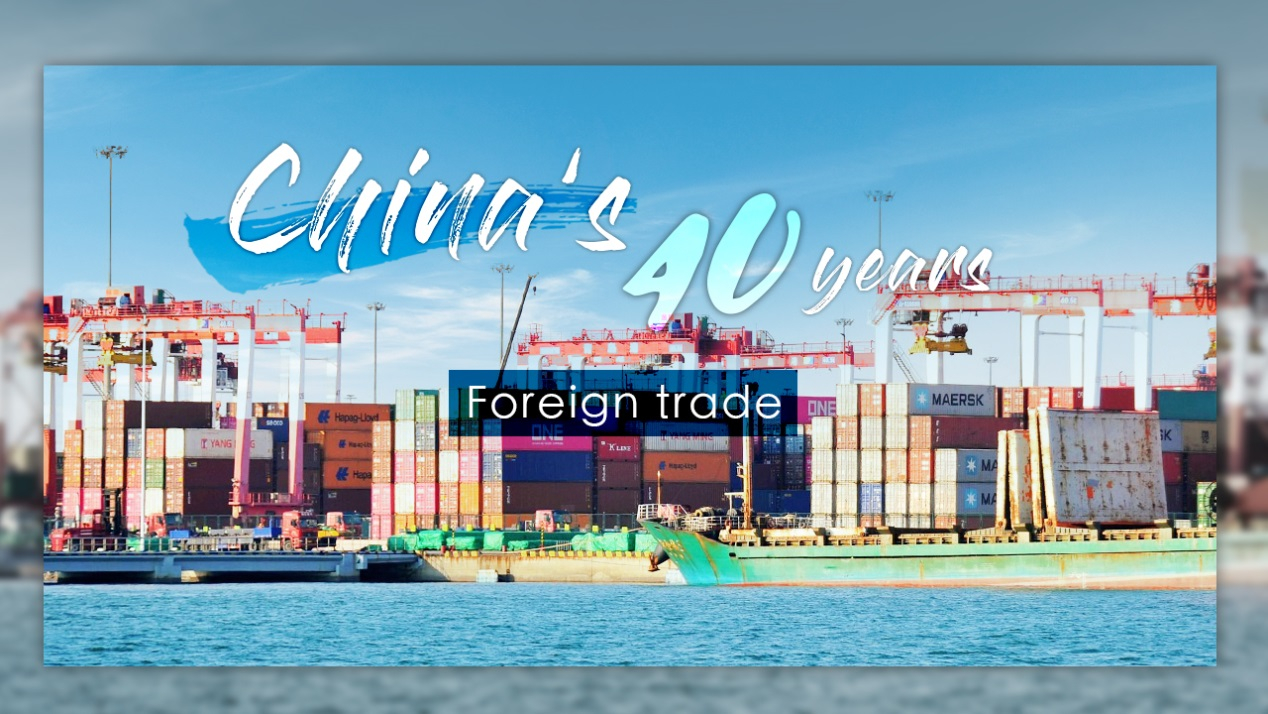
China's foreign trade has grown rapidly in the last 40 years.
According to data from China's National Bureau of Statistics (NBS), the country's total value of import and export of goods grew by an annual average of 18.6 percent from 1978 to 2017 to reach 27.8 trillion yuan (about four trillion U.S. dollars), accounting for 11.5 percent of the world's total.
In the same period, Chinese exports grew to 15.3 trillion yuan from just 16.8 billion yuan, up on average 19.1 percent year-on-year. Meanwhile, imports to China were valued at 12.5 trillion yuan last year.
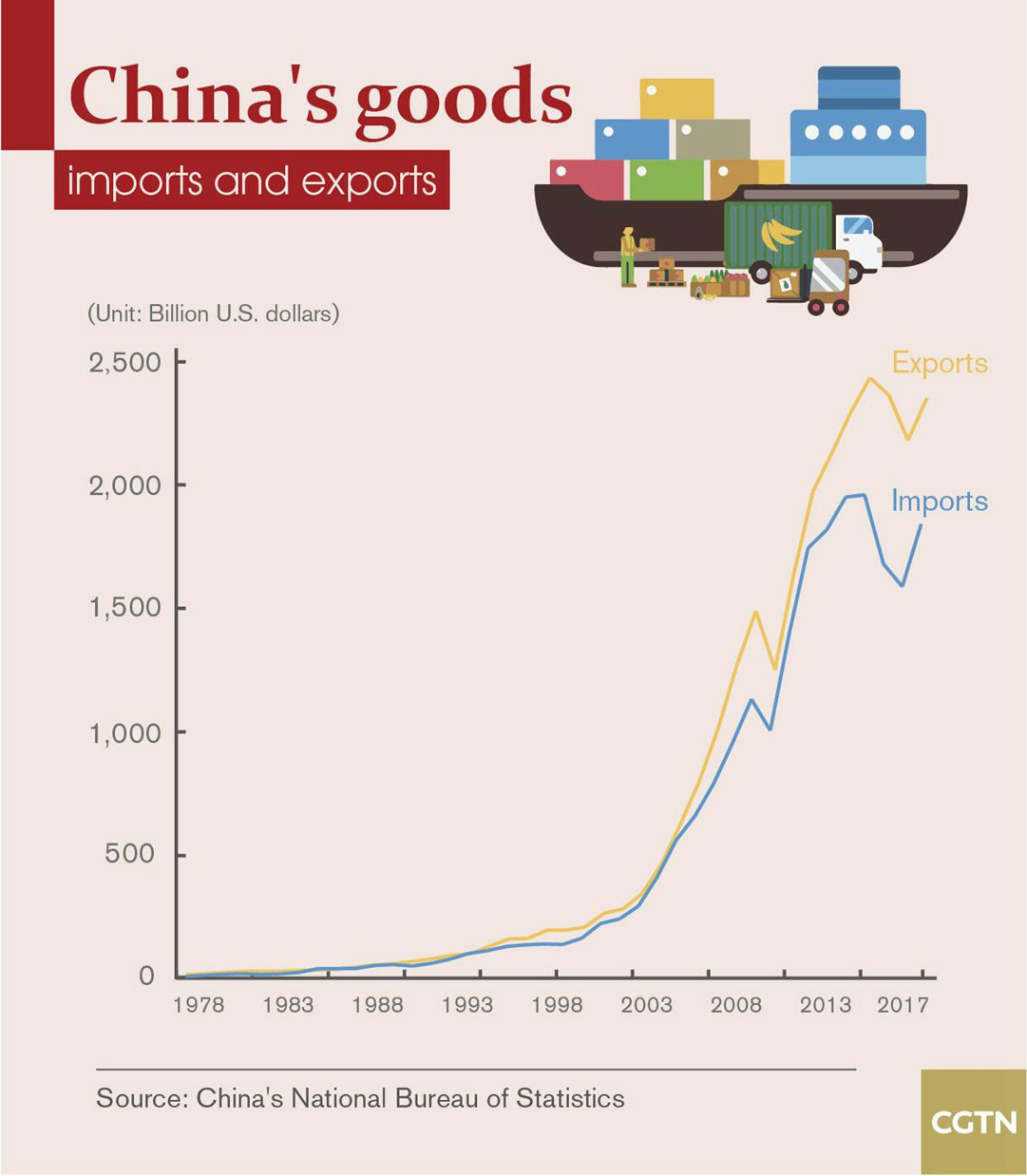
The proportion of primary products among total exports has decreased from 50.3 percent in 1980 to 5.2 percent in 2017, while the share of industrial products rose to 94.8 percent in 2017 from 49.7 percent 40 years ago.
The reform and opening-up policy also affected China's foreign trade structure, which was mainly characterized by general trade with processing trade – importing raw materials and auxiliary parts, processing them locally then exporting the final product – accounting for a small share.
By 1998 China's processing trade had grown significantly to 53.4 percent of the country's total foreign trade from six percent in 1981. After that, its share slipped again due to further transformation and upgrading in the foreign trade structure. Last year, it accounted for 29 percent of the total foreign trade, with general trade taking up 56.3 percent.
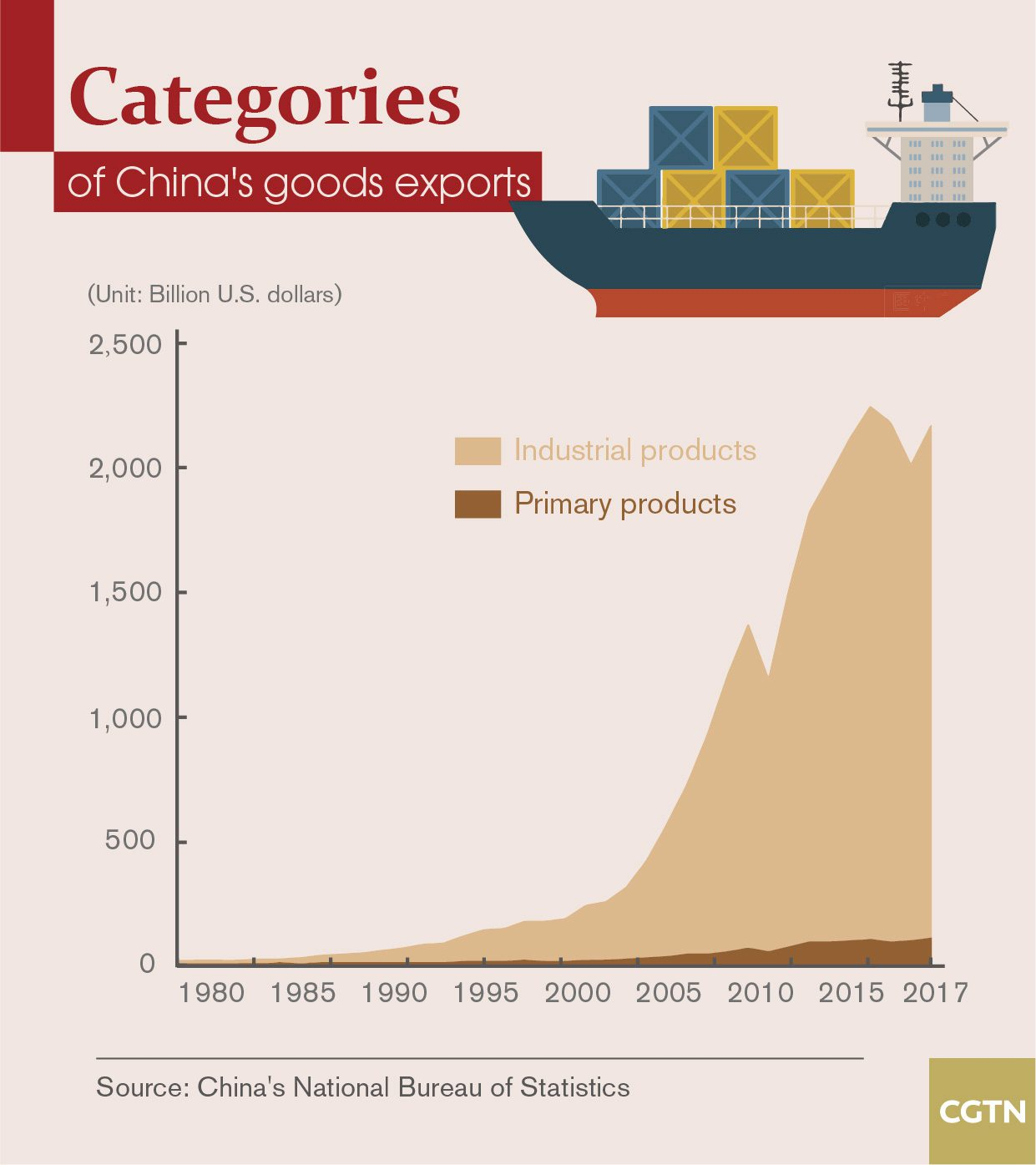
China's list of trading partners, which numbered in the 40s in 1978, grew to 231 economies in 2017. In 2016, China's top five trading partners were the U.S., Hong Kong Special Administrative Region, Japan, the Republic of Korea and Germany, while the top five in 1992 were Hong Kong, Japan, the U.S., Germany and Russia, according to World Integrated Trade Solution.
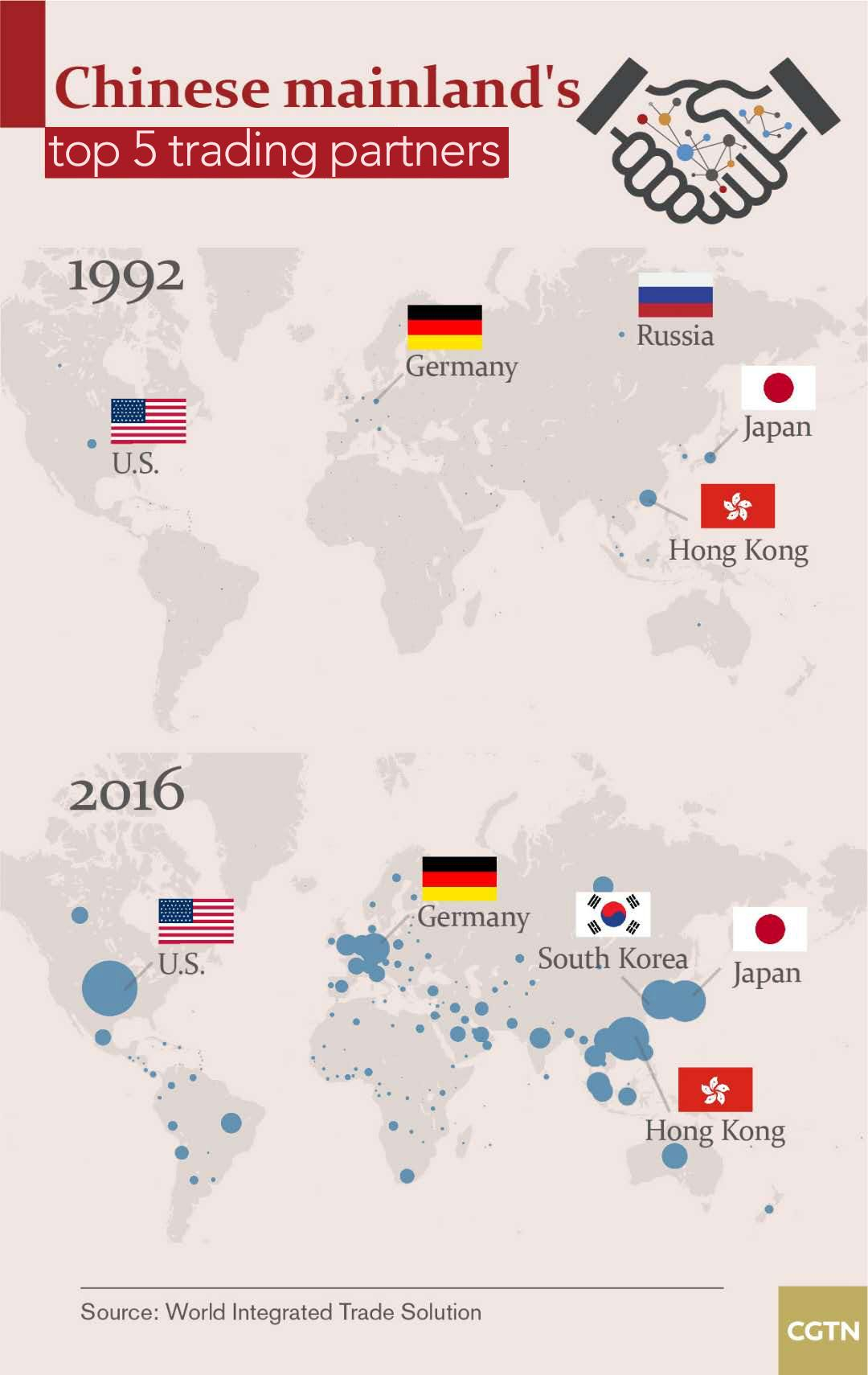
China's import and export of services saw an average increase of 15.4 percent year-on-year from 4.69 billion U.S. dollars to 695.7 billion U.S. dollars in the last 40 years. The export of services jumped 84.4 times, while the import of services increased 230 times over the same period.
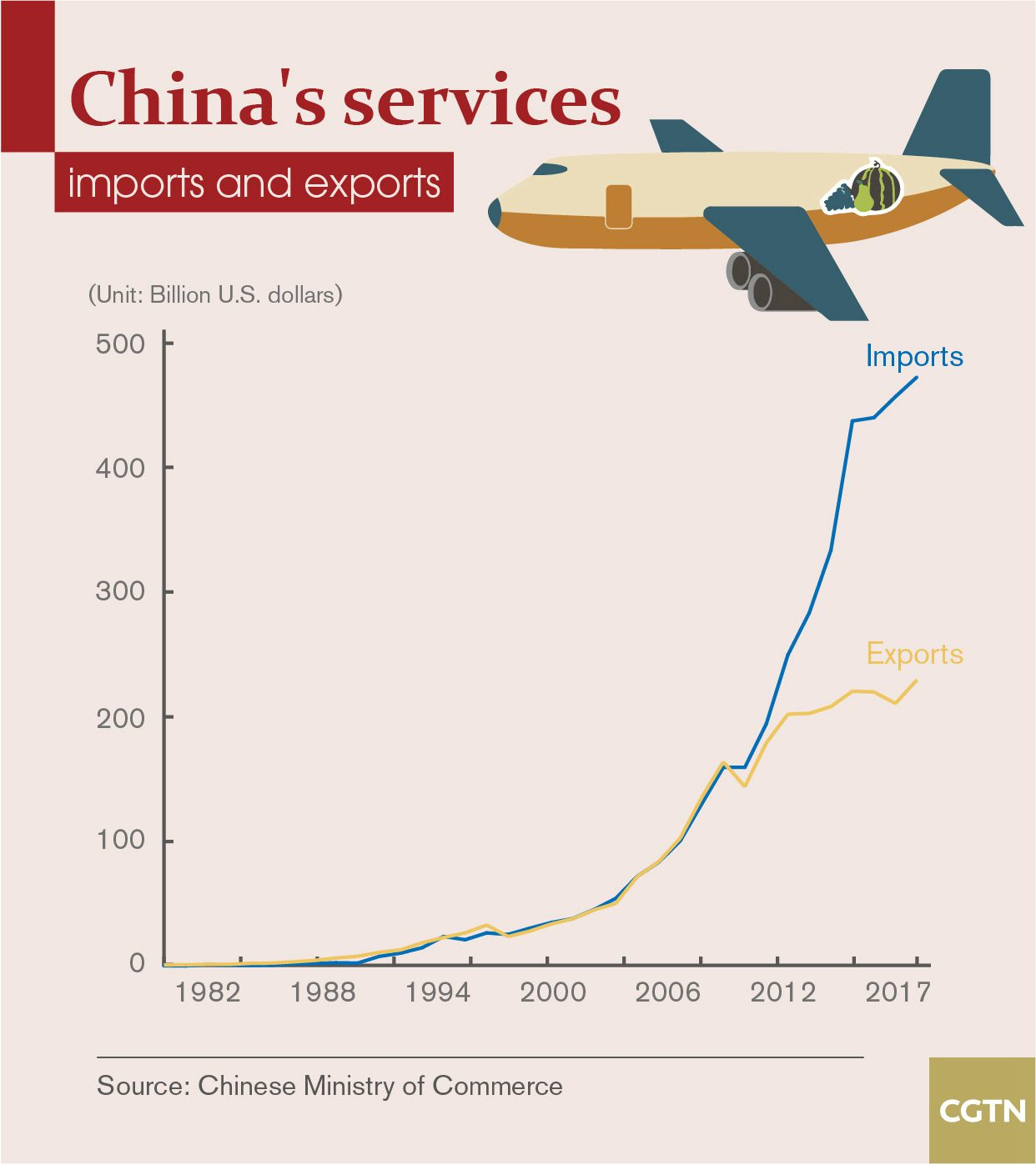
Traditional services, such as travel, transportation and construction, played a major role at the beginning of the reform and opening-up, accounting for more than 70 percent of the total foreign trade of services.
With China deepening its reform and opening its market wider to the world, data from the Chinese Ministry of Commerce shows the emerging service sector, such as insurance, finance, information and intellectual property, has boomed thanks to better technology, branding, quality and service.

SITEMAP
Copyright © 2018 CGTN. Beijing ICP prepared NO.16065310-3
Copyright © 2018 CGTN. Beijing ICP prepared NO.16065310-3